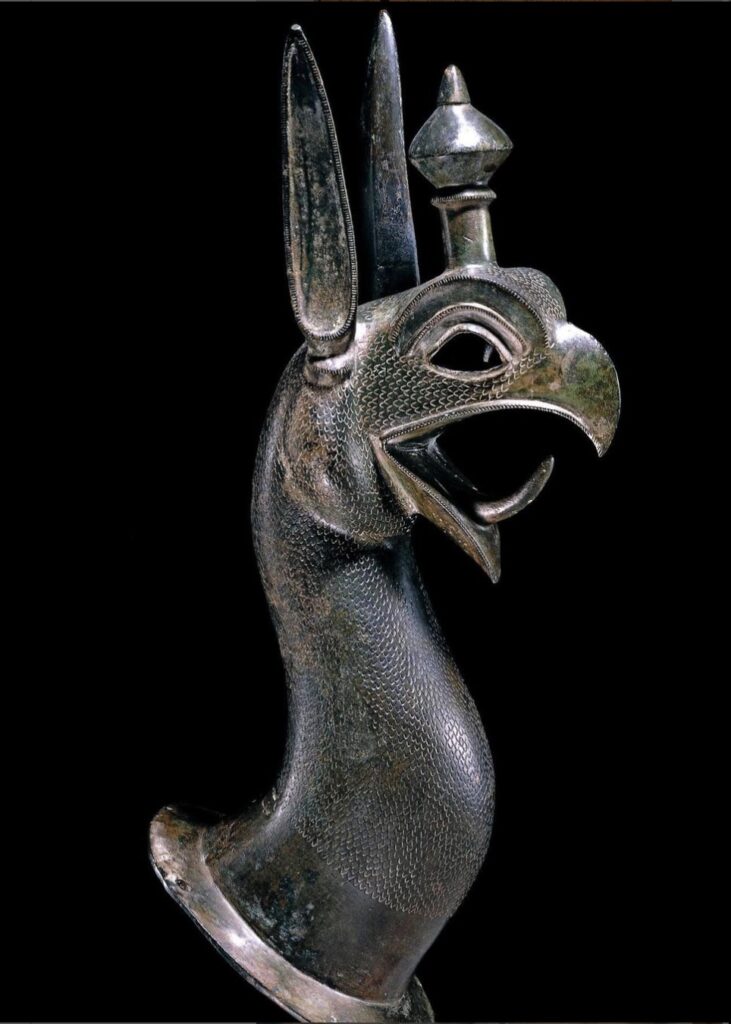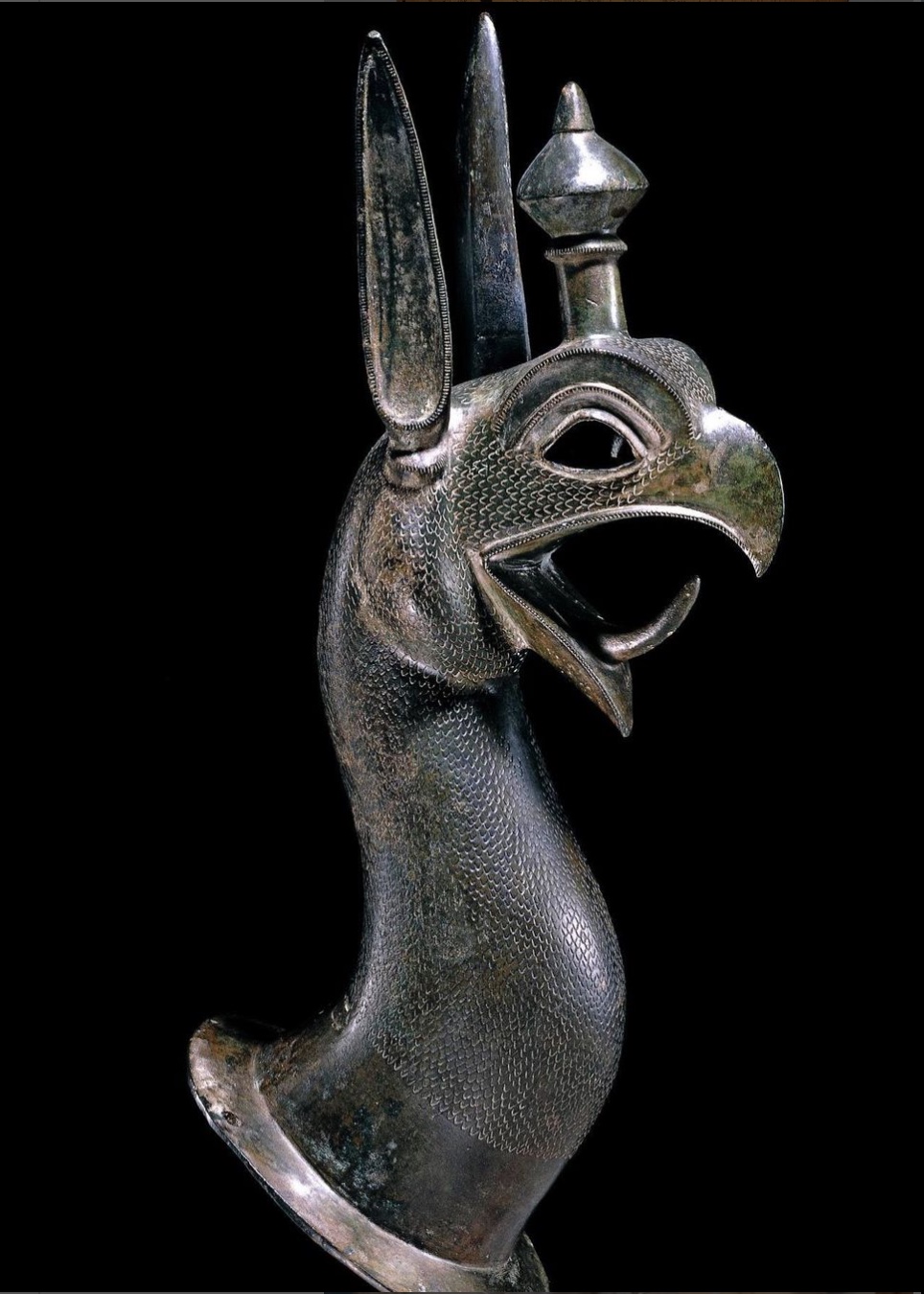With sinuous, scaly neck, ears on high alert, raptor-beak, and that glorious tongue, you can practically imagine this griffin screaming…
This bronze (now in the British Museum) is in the shape of an especially fierce griffin, the forepart of a mythical beast with Eastern origins. But while this is an especially fine example (and BIG at 37 cm!), it is not a one-off: it was hollow cast as an attachment to be riveted onto the rim of a large cauldron, and would have been one of six or seven others arrayed around the perimeter.

More than saucepans, monumental cauldrons (the especially special ones decorated like this) had important religious functions. Costly and impactful, they were frequently offered as dedications in sanctuaries over the course of the 7th century B.C. They were also used in the performance of sacrifices, where a ritually slaughtered animal would be roasted on spit or boiled in a cauldron. The gods received the smoke or steam, while the mortals enjoyed the feast (pragmatic, no?).
This performative aspect is fascinating to me. Not to imply that steam would have erupted from the griffins’ open mouths (it would not), what could be more impressive and otherworldly than steam burbling and erupting around the screaming heads of this fearsome bunch – lit below from flickering flame?
‘Double, double toil and trouble;
Fire burn and cauldron bubble!’




